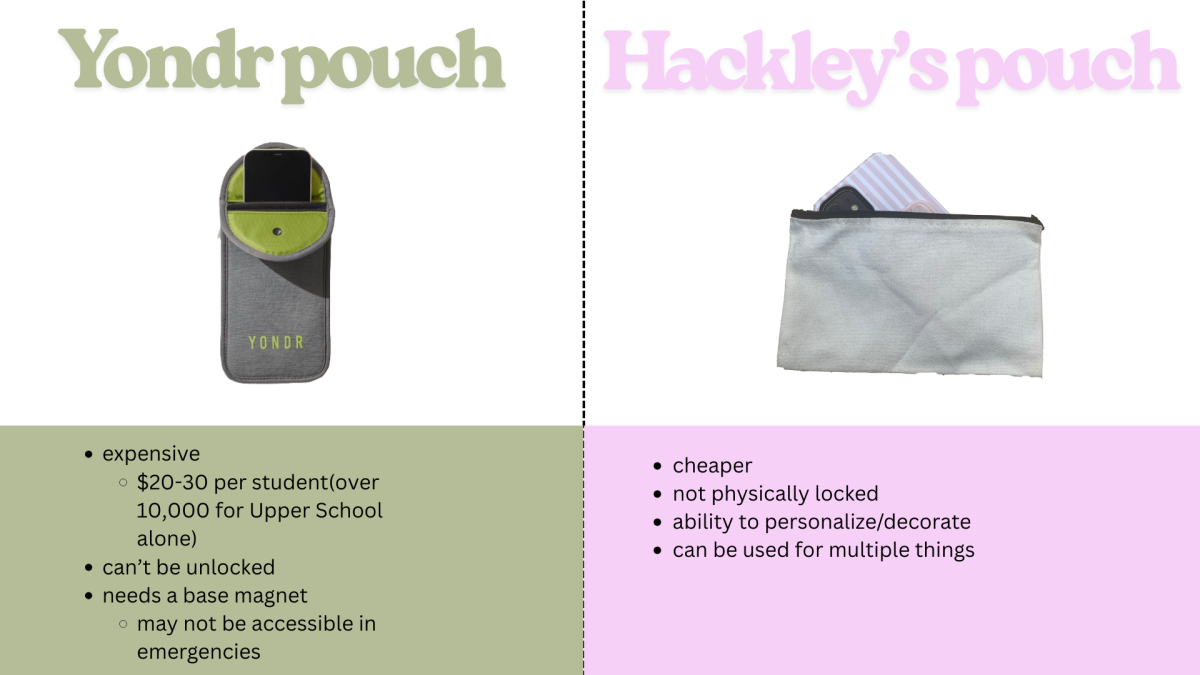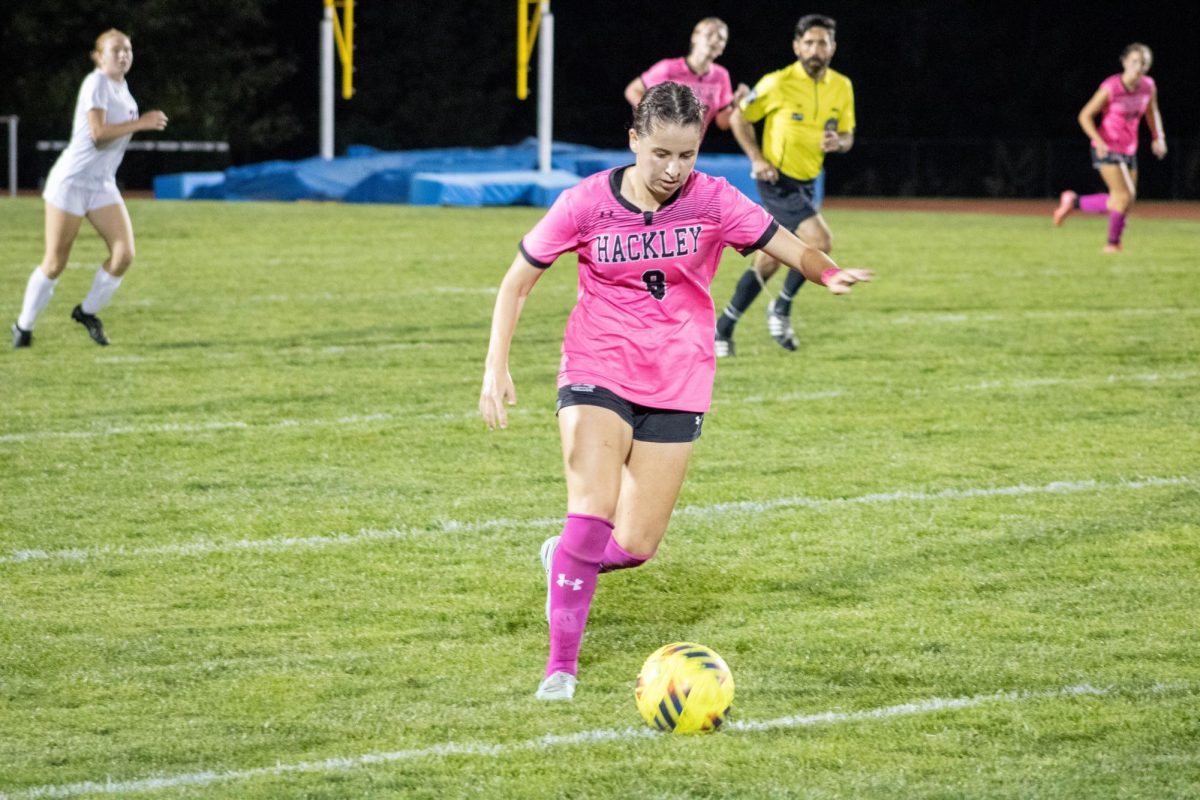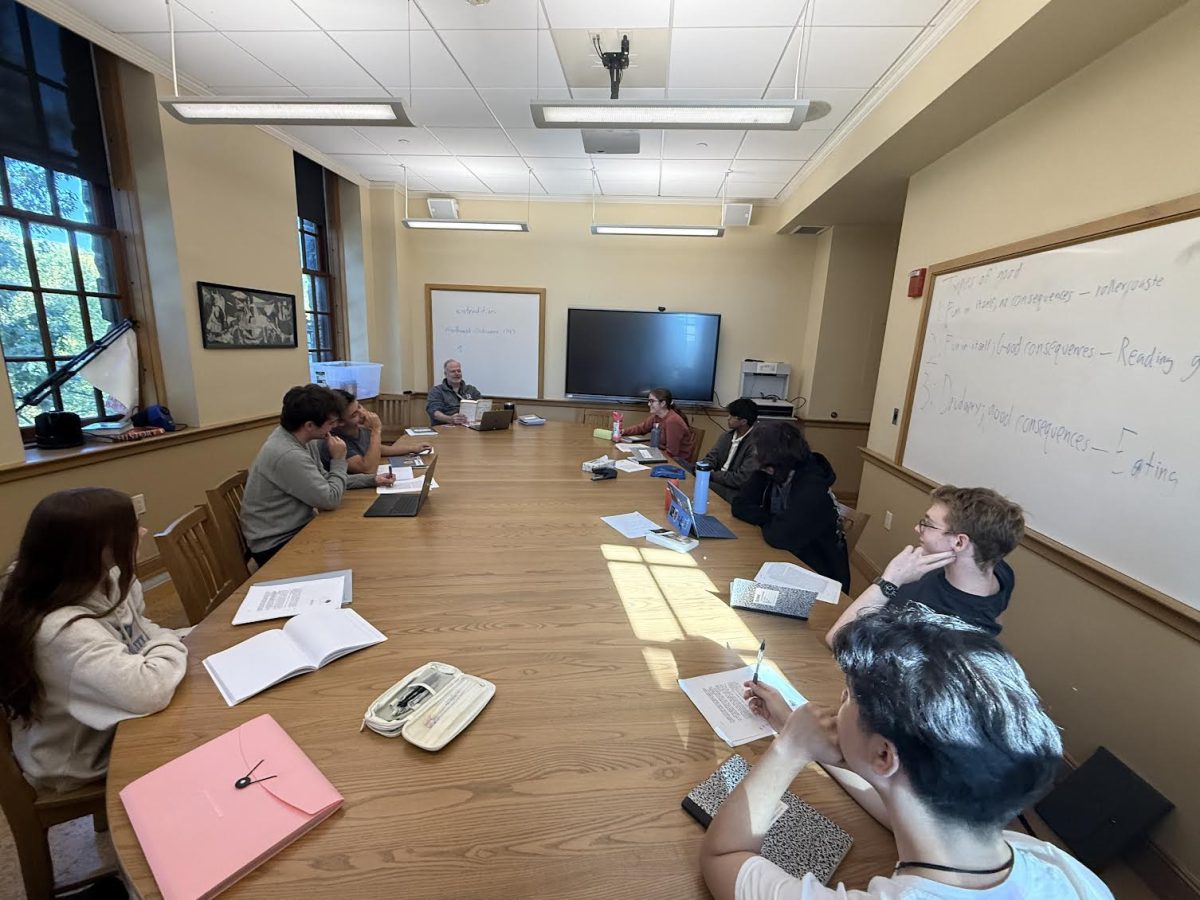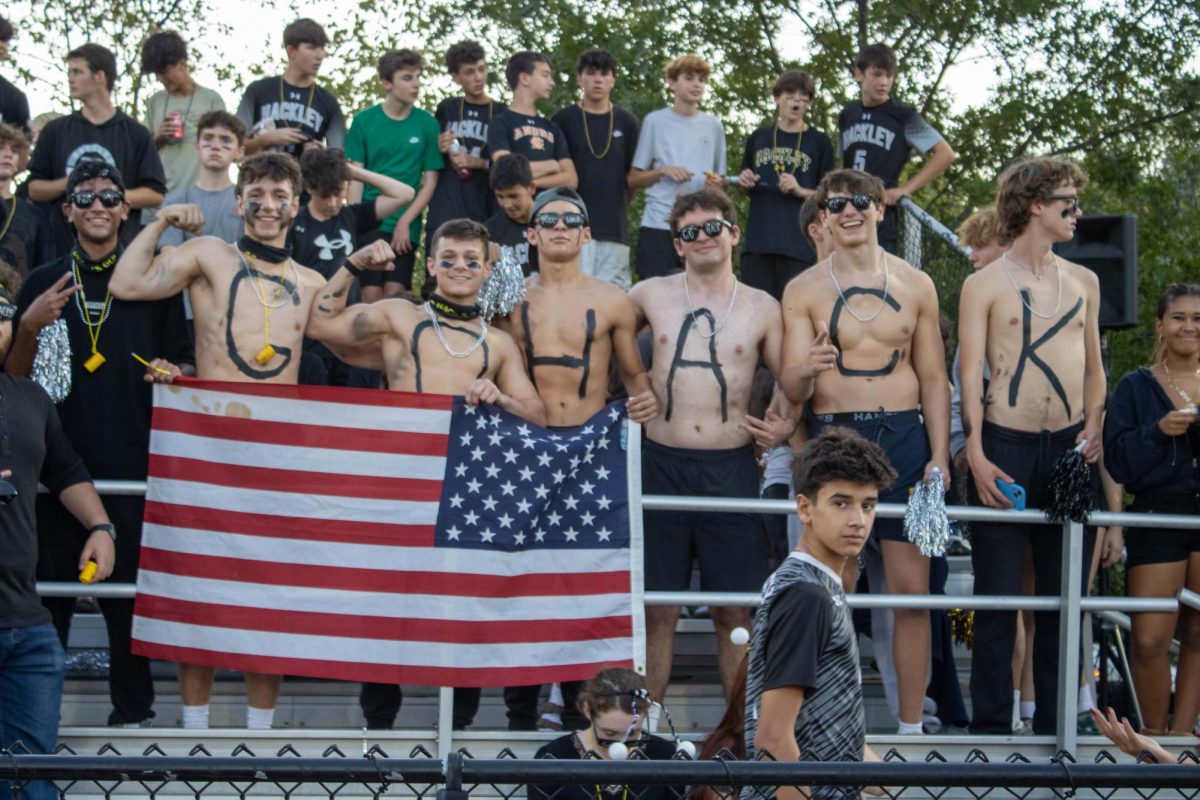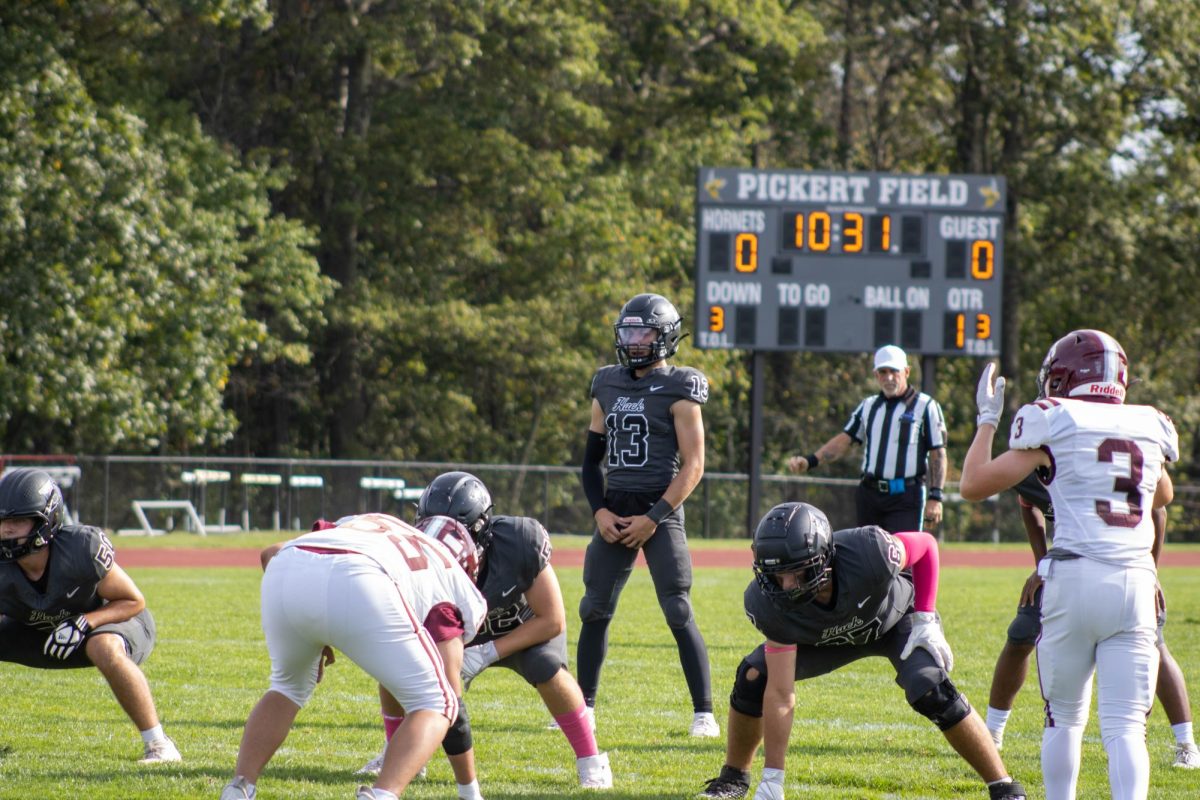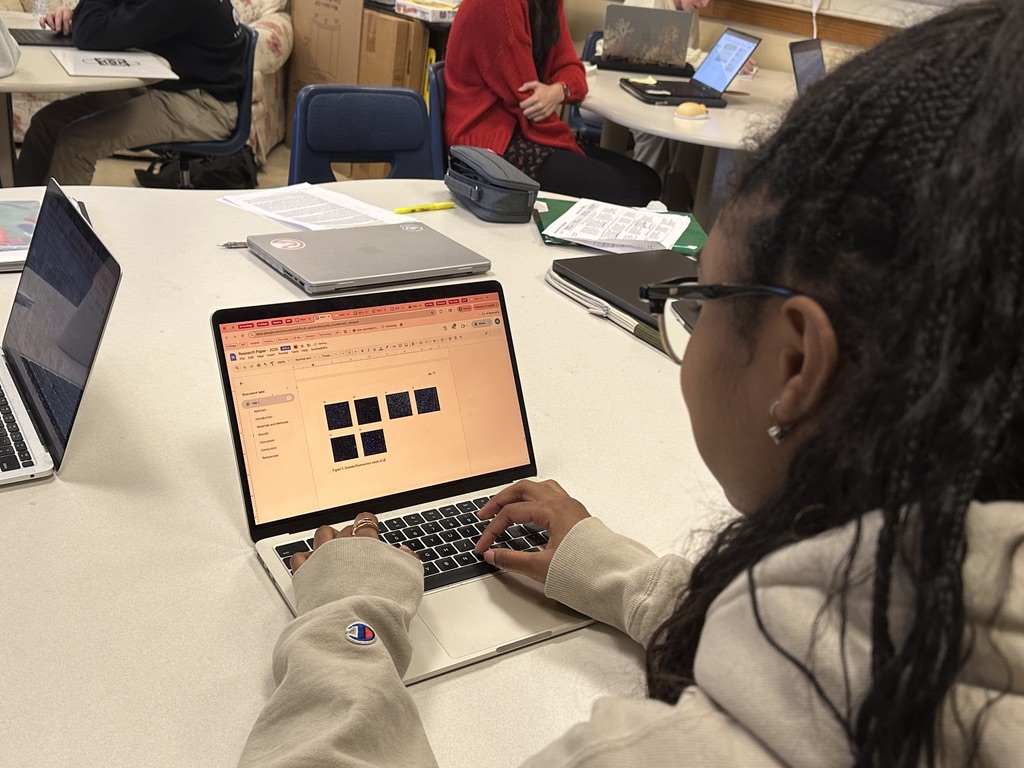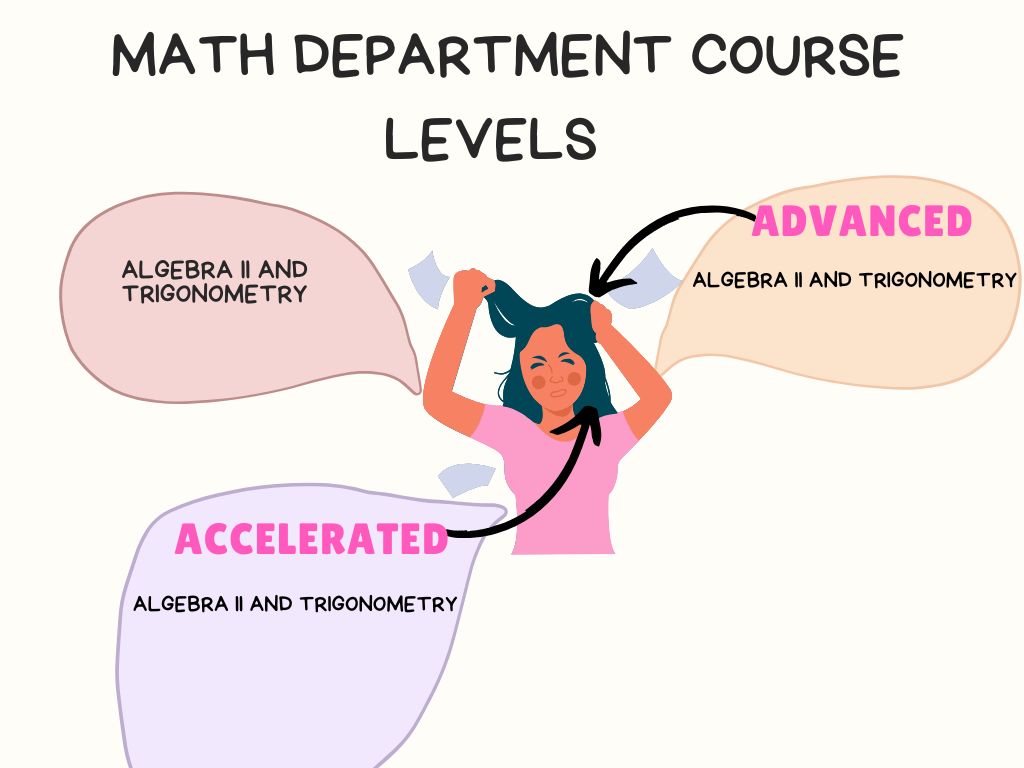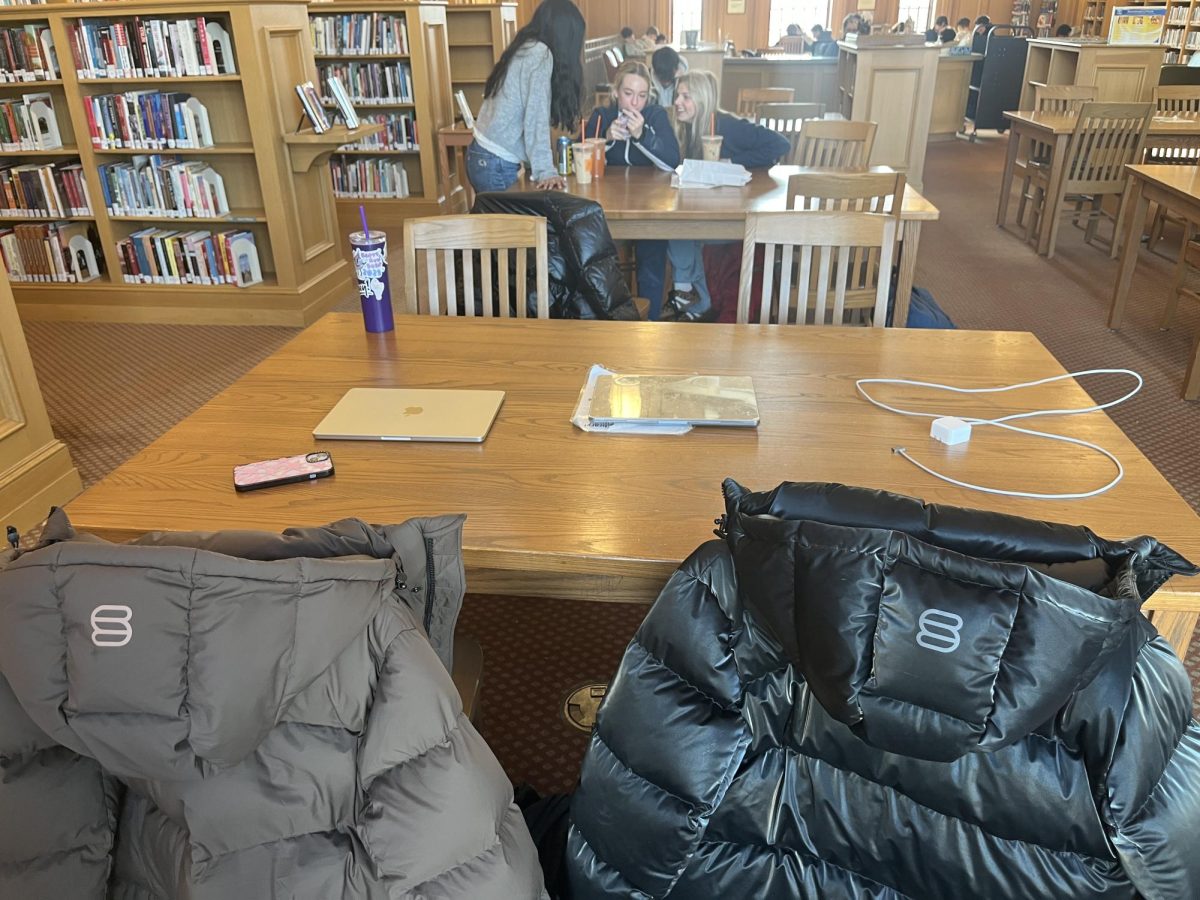Students most likely wouldn’t want to hear this from the voice of the student body, but this phone ban is actually the best-case scenario because our phones are not locked away.
The average teenager checks their phone over 100 times a day. By banning the use of phones during the school day, the administration hopes for students to use these moments for socialization.
The Dial believes that Hackley’s new phone policy is the best possible solution to a phone ban, but is skeptical about the administration’s hope that it will increase communication between students.
As the 2025-2026 school year began, it was no surprise to Upper School students that Hackley would attempt to limit/ban phones for the upcoming school year. During the 2024-2025 school year, Head of School Charles Franklin tried to limit phone use significantly compared to previous years by banning it in ‘public spaces,’ such as the lunch room and Diller Hall. As a fairly new member of the Hackley community, he wanted students to engage in more conversation instead of turning to their phones and social media.
Mr. Franklin was already trying to limit student phone use, and with the “bell-to-bell” ban on cell phones in New York state, it seemed like the perfect time for Hackley to implement their own ban. Even though the state phone ban doesn’t require private schools to ban phones, many schools in the Ivy League, such as Riverdale and Horace Mann, have also banned the use of cell phones during the school day. Riverdale refers to its policy as the “Heads Up” policy, hoping it will help ensure “real-world connections” between its students.
This year, Hackley students are required to store their phones in a zip-up pouch. They can keep this pouch in their pockets, lockers, cars, or backpacks. At the end of the school day, 3:10 p.m., students are allowed to take their phones out before sports practices start.
The majority of Hackley students use their own MacBooks, which means that they still can text/contact people throughout the day, just not through their phones. Almost everything students do on their phones can be done on a computer, so the ban doesn’t necessarily limit students’ ability to do things, but it does serve as a reminder for students to interact with each other instead of all sitting together on devices.
Different schools throughout the state have used different methods to prevent students from using their phones. Here in Westchester, Yonkers High School has decided to implement Yondr pouches. Yondr pouches use a magnetic locking system to secure phones in a pouch. There is a special magnetic base that is used to lock the phone in the pouch at the beginning of the school day. At the end of the day, the pouches can be unlocked using the same magnetic base. These pouches have gone viral on social media platforms. Many videos have been circulating of students trying to break into the pouches. Other schools have decided to have students turn in phones during a homeroom period. The phones are either locked away or kept in possession by the teacher till the end of the school day.
While these methods are effective, they do pose a major safety issue in today’s world. The reality is that school shootings are something very common. In the case that students are alone and there is a shooter or some other type of emergency, they must have the ability to contact help if they need to, especially on a large campus like Hackley. By allowing students to keep their phones with them throughout the day, Hackley has created a safe way to ban phones.
The hope from the administration was for students to use the time they spent on their phones towards communicating with peers. The Dial, however, is skeptical about the impact of this policy, considering students have access to almost everything on their phones and on their computers. Students even have the ability to mirror their phones onto their laptops, allowing them to use their phones on their computers.
Yet there are many workarounds to the phone ban; it has definitely had an impact on the way students communicate with each other. Without having the ability to look at their phones, students are more likely to talk to someone on their way to classes or just around campus.
Even though most students aren’t a fan of the ban, it is important that students realize how important and lenient the ban is, and if we don’t follow it, it could lead to a stricter policy.

